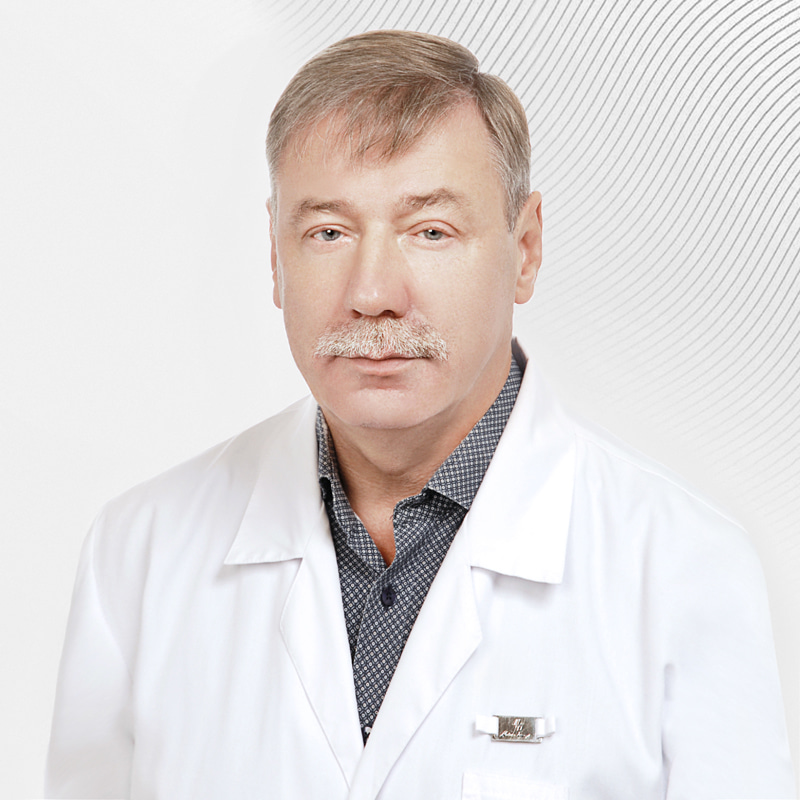Liver lobe resection
Anatomy and liver function
The possibility of surgical intervention on the liver is due to a number of anatomical features of this organ.
The liver is a large organ weighing up to 1.5 kg, which is formed from glandular tissue. The functional tissue of the organ is called parenchyma and consists of special cells, hepatocytes, whose share in the overall structure of the organ reaches 80%. The liver performs several very important functions:
- Digestive:It produces bile, which enters the duodenum.
- Barrier:It neutralizes toxins that are delivered with blood, neutralizes substances absorbed in the intestine.
- Hormonal: synthesizes cholesterol, from which all steroid hormones are formed.
- Hematopoietic:In the embryonic period, it produces platelets, red blood cells, and granulocytes, but in an adult with excessive blood loss, it can also take over the function of hematopoiesis.
The liver is located in the upper right part of the abdominal cavity. The organ is supplied with blood from the portal vein, which carries blood from the unpaired organs of the abdominal cavity, and its own hepatic artery. Blood is drained from the organ through three large hepatic veins, as well as short hepatic veins, and bile is discharged through the bile ducts.
The liver is divided into the right and left lobes, divided into 8 segments and 4 sectors. However, from the point of view of surgical treatment, the main role is played by the idea of the segmental structure of the liver. In total, there are eight pyramidal segments, each of which has its own branch of the hepatic artery, portal vein, and branch of the biliary tract (Glisson triads).
Segments and sectors of the liver are formed at the stage of intrauterine development. Due to the important function that this organ plays in the vital activity of the body, the functions of the liver sections are duplicated. In case of a disease in one area, the rest of the liver parenchyma redistributes metabolic processes to compensate for the "dropped out" segment.
Due to the segmental structure of the organ, the surgeon has the opportunity to remove its damaged part, practically without affecting healthy tissues and blood vessels. The liver also has a unique ability to self-heal. It is able to restore up to 75% of its volume. That is why liver resection does not worsen the patient's quality of life, and he can quickly return to his usual lifestyle.
However, the extremely high bleeding of the organ is an unfavorable factor for the operation. A large blood loss poses a danger to the patient's life. Therefore, the operation is performed by experienced hepatologist surgeons in a specialized, well-equipped department.
Types of liver resection
Liver resection uses terminology based on the segmental structure of the organ. For example, the following types of operations are distinguished::
-
right-sided hemihepactectomy removal of V-VIII segments;
-
left-sided hemihepactectomy removal of II and IV segments;
-
right-sided lobectomy (extended right-sided hepatectomy)Removal of the entire right side of the liver, then there are segments IV and VIII, and sometimes I;
-
left-sided lobectomy (extended left-sided hepatectomy)removal of the entire left side of the liver and the right anterior sector, then there are segments I, IV, V and VIII).
Depending on the method of surgery, typical and atypical liver resection are distinguished.
A typical resection (anatomical) involves excision of tissues within the natural anatomical separation of individual segments or groups of them. Most often, you have to delete two or more segments. Depending on the volume of liver parenchyma (tissue) being removed, the following are distinguished:
-
segmentectomy removal of a separate segment;
-
Sectionectomy (sectorectomy) deleting a group of segments;
-
hemihepatectomy removal of the entire liver lobe;
-
extended hemihepatectomy removal of one lobe and the adjacent segment of the other lobe.
-
Atypical resection (non-anatomical)A technique in which only the damaged part of the liver is removed. This operation preserves a larger volume of healthy tissues, so it has a more gentle effect. The use of such a technique may be preferable in the treatment of cancers, when maintaining the maximum volume of the organ is important for the tolerability of subsequent chemotherapy and staged liver resections. Atypical resection can also be performed by various methods.:
-
marginal;
-
wedge-shaped (excision of a triangular shaped area);
-
planar (excision of a fragment from the diaphragmatic surface);
-
transverse (removal of a section of the side surface).
-
Methods of performing the operation
The operation can be performed using various methods:
- Laparotomy. In this case, the operation is performed through an incision in the abdominal wall. This method is preferable for large liver tumors and in difficult cases where the surgeon needs a wide field of work to work effectively.
- Laparoscopic. During laparoscopic surgery, the doctor makes several punctures in the abdominal wall. A probe with a miniature video camera and microsurgical instruments are inserted through the punctures, which perform the necessary manipulations. This method is used for tumors of peripheral formations in segments II and VI, with sizes less than 5 cm.
- Robot-assisted surgery.In this case, the intervention is also performed with laparoscopic access, but using a robotic surgical system. The use of the robot expands the possibilities of laparoscopy, allowing the use of minimally invasive techniques even for large operations, for example, right-sided and left-sided hepatectomy, when conventional laparoscopy has difficulties with tissue visualization and maneuvering of micro-tools.
Indications for liver resection
Indications for surgical treatment are:
-
large liver hemangiomas and nodular fibrous hyperplasia located on the periphery of the organ, which cause deformation of the anterior abdominal wall and worsen the quality of life;
-
primary liver cancer (hepatocellular carcinoma, cholangiocellular carcinoma);
-
liver adenoma;
-
secondary cancer (single and/or multiple liver metastases);
-
cysts (cystadenomas and cystadenocarcinomas, cysts of the bile ducts of various localization);
-
echinococcosis and alveococcosis (a parasitic disease in the cystic or multilocular variant);
-
traumatic injury (liver and bile ducts)
-
rare non-epithelial liver tumors (hemangioendotheliomas, sarcomas, lipomas, hamartomas, pseudoinflammatory tumors)
Also, intervention on the liver can be prescribed in the case of more rare pathologies of abscesses, stones in the biliary tract, Karoli's disease.
Contraindications
When surgery is considered as a method of treatment for cancer, the possibilities of its implementation are evaluated according to the Child-Pugh criteria. In this case, indicators of the general condition of the body are used (albumin level, blood clotting, the presence of fluid in the abdominal cavity, the presence of encephalopathy). The operation is performed only if preliminary studies show that all indicators are within the normal range or have changed slightly. With decompensated cirrhosis of the liver, when liver resection is impossible due to low functional reserves or due to severe concomitant diseases or the patient's refusal of liver resection, it is possible to use minimally invasive local treatment methods such as cryoablation, stereotactic radiosurgery, chemoembolization. In some cases, patients are referred for liver transplantation.
Surgical intervention is also contraindicated in the following cases:
-
significant liver damage (more than 80%);
-
the presence of metastases in distant organs (spine, brain, kidneys, heart);
-
cirrhosis of the liver;
-
the general serious condition of the patient, in which recovery after major surgery is unlikely.;
-
the tumor has affected the portal vein (it is impossible to perform surgery without the risk of extensive bleeding).
In these cases, alternative cytoreductive minimally invasive treatment methods (thermal ablation, radiosurgery, a combination of cryoablation and radiosurgery) can be used
Prognosis
The prognosis in terms of quality and life expectancy of the patient after surgery depends on the nature of the disease and the stage. A combined multidisciplinary, personalized approach to treatment allows for excellent short- and long-term results, as well as quality of life.
Frequently asked questions
How long does the liver heal after resection?
The liver regenerates well, and depending on the volume of resection, it can recover by 75% within 6 to 8 weeks, and it can take up to a month to return to normal life.
What part of the liver can be removed?
Depending on the type and volume of organ damage, the entire right or left lobe or one of the liver segments can be removed. It is believed that complete restoration of liver function is possible with the removal of up to 75%-80% of its volume. With low functional reserves of the liver (chronic hepatitis, cirrhosis of the liver, non-alcoholic metabolic liver disease), the volume of the removed parenchyma (liver tissue) in some cases should not exceed 15-25% of the total volume of the liver.
Where is the incision made during liver surgery?
If the operation is performed laparotomically, the abdominal wall incision has a J shape, then there is a median incision extended under the right hypochondrium. After healing, the scar will be almost invisible. With laparoscopic access, punctures for trocar insertion are located in several areas of the anterior abdominal wall.
Which doctor performs liver surgery?
Liver surgery is performed by a hepatopancreatobiliary surgeon.
Surgical treatment of liver diseases at the EMC clinic is conducted according to the most up-to-date international protocols, taking into account the clinical recommendations of global specialized organizations. Advanced techniques are used, including laparoscopic and robot-assisted surgical procedures. The operations are performed by Russia's leading pancreatobiliary surgeon, Professor Alexey Zhao.
You can make an appointment for a consultation and ask any questions about our services by phone +7 495 933-66-55.
Doctors



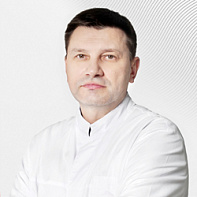

.jpg)
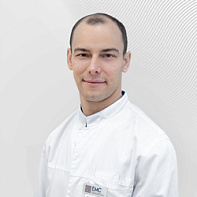

.jpg)
.jpg)

.jpg)
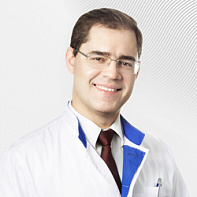
.jpg)
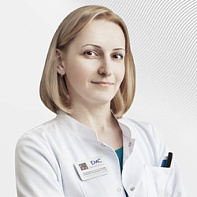


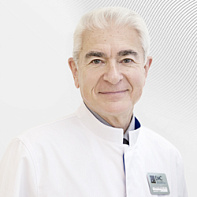

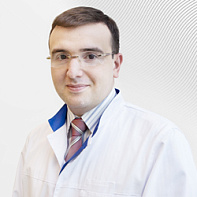
- Unique expertise is the first in In Russia, he performed laparoscopic decompression of the celiac trunk in patients with ischemic digestive system disease
- The first in In Russia, he performed laparoscopic kidney sampling during related transplantation
- He was one of the first in the world to perform suturing of a duodenal ulcer perforation
- He was one of the first in the world to perform...
